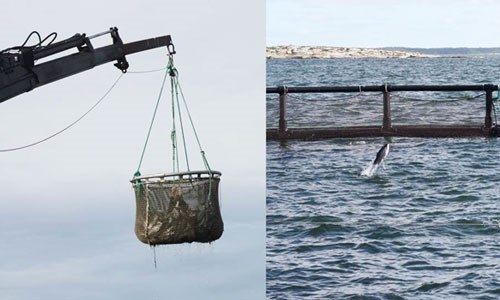In 2013 we published the report 31-4568/11 "Risk evaluation of slaughter of farmed fish in Sweden". Unfortunately, as the report points out, a risk assessment is never better than the experimental data it is based on and with the limited amount of scientific data available on fish welfare; any risk assessment can today only be semi-quantitative. Still, based on the data available at the time, the report highlights that stunning fish with carbon dioxide (CO2) is the method with the highest risk of compromising the welfare of the animals. These results were not surprising considering that stunning fish with CO2 was deemed unacceptable by EFSA A (European Food Safety Authority) already in 2004. Yet, in Sweden, it is still legal and represents the dominating method used. This is possibly because most alternative stunning systems are still in development, and so several uncertainties regarding benefits and disadvantages of different methodologies have not been resolved. Recent findings also show that even in situations when fish appear calm, physiological stress indicator suggest that they experiencing severe stress. Therefore, in order to accurately assess the welfare of fish at the time of slaughter in the future we need validated welfare indicators in fish. We also need a better understanding of the states of unconsciousness and insensibility in fish and develop methods to assess these in a reliable way.
The ideal slaughter stunning method is one that induces instantaneous and long-lasting unconsciousness allowing personnel sufficient time to kill the animal. Consequently, if immobility occurs before consciousness is lost there is a risk that exsanguination and evisceration is performed on a conscious animal. Similarly, if the period of unconsciousness is too short, the fish may recover consciousness before being killed. Both scenarios are unacceptable from an ethical point of view. However, as highlighted by EFSA, a fundamental limitation when assessing fish welfare with different slaughter and stunning methods is the lack of evidence-based information on consciousness indicators. One method suggested to be reliable to measure consciousness in fish is to register brain activity through evoked responses on the EEG.
In the project we will develop a standardized and repeatable method to register visually evoked responses on the EEG (VERs) in fish. We will focus on stunning methods currently used at Nordic fish farms including CO2 narcosis, electrical stunning, percussive stunning and live chilling. First, we will determine if these methods induce unconsciousness and not only immobilization. Additionally, we will test these methods under a range of temperature, and in combination with exsanguination, to ensure that the stunning methods which are inherently transient (i.e. CO2 narcosis, electrical stunning and live chilling) result in long enough unconsciousness until the fish is dead. Beside registrations of VERs, we will also monitor a range of external signs such as, ventilation rate, eye roll and coordinated body movements. By correlating these external signs with VERs we will be able to determine if there are external signs that can be practically used to determine fish consciousness in real farm/slaughter situations.
